- Region
- Águilas
- Alhama de Murcia
- Jumilla
- Lorca
- Los Alcázares
- Mazarrón
- San Javier
-
ALL AREAS & TOWNS
- AREAS
- SOUTH WEST
- MAR MENOR
- MURCIA CITY & CENTRAL
- NORTH & NORTH WEST
- TOWNS
- Abanilla
- Abarán
- Aguilas
- Alamillo
- Alcantarilla
- Aledo
- Alhama de Murcia
- Archena
- Balsicas
- Blanca
- Bolnuevo
- Bullas
- Cañadas del Romero
- Cabo de Palos
- Calasparra
- Camping Bolnuevo
- Campo De Ricote
- Camposol
- Canada De La Lena
- Caravaca de la Cruz
- Cartagena
- Cehegin
- Ceuti
- Cieza
- Condado de Alhama
- Corvera
- Costa Cálida
- Cuevas De Almanzora
- Cuevas de Reyllo
- El Carmoli
- El Mojon
- El Molino (Puerto Lumbreras)
- El Pareton / Cantareros
- El Raso
- El Valle Golf Resort
- Fortuna
- Fuente Alamo
- Hacienda del Alamo Golf Resort
- Hacienda Riquelme Golf Resort
- Isla Plana
- Islas Menores & Mar de Cristal
- Jumilla
- La Azohia
- La Charca
- La Manga Club
- La Manga del Mar Menor
- La Pinilla
- La Puebla
- La Torre
- La Torre Golf Resort
- La Unión
- Las Palas
- Las Ramblas
- Las Ramblas Golf
- Las Torres de Cotillas
- Leiva
- Librilla
- Lo Pagan
- Lo Santiago
- Lorca
- Lorquí
- Los Alcázares
- Los Balcones
- Los Belones
- Los Canovas
- Los Nietos
- Los Perez (Tallante)
- Los Urrutias
- Los Ventorrillos
- Mar De Cristal
- Mar Menor
- Mar Menor Golf Resort
- Mazarrón
- Mazarrón Country Club
- Molina de Segura
- Moratalla
- Mula
- Murcia City
- Murcia Property
- Pareton
- Peraleja Golf Resort
- Perin
- Pilar de la Horadada
- Pinar de Campoverde
- Pinoso
- Playa Honda
- Playa Honda / Playa Paraíso
- Pliego
- Portmán
- Pozo Estrecho
- Puerto de Mazarrón
- Puerto Lumbreras
- Puntas De Calnegre
- Region of Murcia
- Ricote
- Roda Golf Resort
- Roldan
- Roldan and Lo Ferro
- San Javier
- San Pedro del Pinatar
- Santiago de la Ribera
- Sierra Espuña
- Sucina
- Tallante
- Terrazas de la Torre Golf Resort
- Torre Pacheco
- Totana
- What's On Weekly Bulletin
- Yecla


- EDITIONS:
 Spanish News Today
Spanish News Today
 Alicante Today
Alicante Today
 Andalucia Today
Andalucia Today
History of Corvera
Corvera, the last 2000 years.
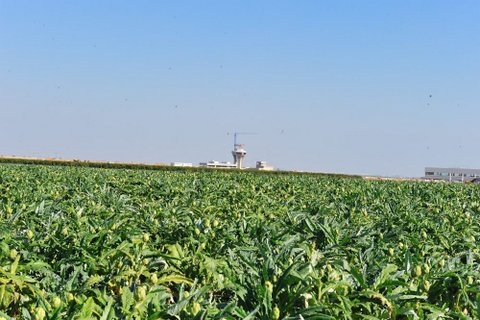 Corvera is one of the largest districts ( pedanías ) in the municipality of Murcia, and for centuries was even larger and more important, when it used to include the localities of Lobosillo, Valladolises, Balsapintada and Truyols.
Corvera is one of the largest districts ( pedanías ) in the municipality of Murcia, and for centuries was even larger and more important, when it used to include the localities of Lobosillo, Valladolises, Balsapintada and Truyols.
Today it is assuming a new ròle of importance as the home of the International airport of Corvera, a ròle which greatly increases its status and importance as a Pedanía of Murcia Capital.
History of Corvera.
Corvera incorporates not only large areas of flat farming land, but also a more mountainous region known as the Sierra del Puerto de la Cadena, the wooded mountain pass through which the Murcia-Cartagena motorway now runs. It lacks natural springs and water resources, although is criss crossed by ramblas, which collect water running off from the Sierra de Carrascoy, such as that of La Murta or el Ciprés.
Corvera under the Romans
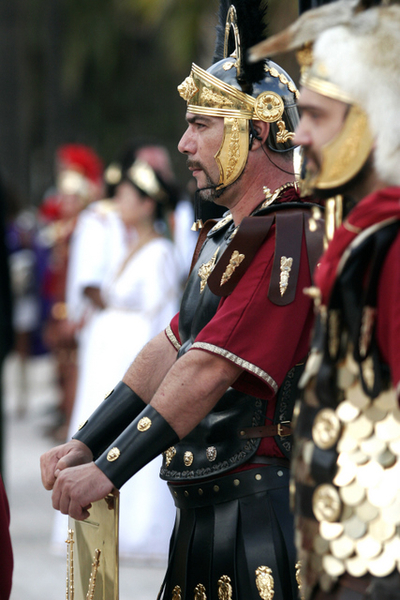 This lack of focal water source means that its early habitation is sparse, there being no trace of early prehistoric remains, the first real traces of habitation dating to the late Iberian- early Roman epoch. ( The Iberians were present in this area between 525 and 50 BC, and became slowly "romanised" following the invasion of Cartagena in 209BC. By 50BC there was no trace of the Iberians as a separate culture, the practices and customs of the Romans dominating the remains uncovered.)
This lack of focal water source means that its early habitation is sparse, there being no trace of early prehistoric remains, the first real traces of habitation dating to the late Iberian- early Roman epoch. ( The Iberians were present in this area between 525 and 50 BC, and became slowly "romanised" following the invasion of Cartagena in 209BC. By 50BC there was no trace of the Iberians as a separate culture, the practices and customs of the Romans dominating the remains uncovered.)
The materials discovered in this area of Murcia indicate a sparsely scattered population, rather than indicating any sizeable nucleus, evidence of both Roman and Iberian populations in the areas of Los Martínez, Los Muñoces, Los Campillos, Valladolises and Balsicas. In Los Martínez it is clear that there were Iberian inhabitants before the Romans arrived, while in Los Muñoces items have been found from Roman and medieval eras, indicating ongoing settlement.
Corvera: Moorish occupation.
Following the decline of the Romans, the area was occupied first by the Visigoths, and then by the Moors, who invaded southern Spain in the early 8th century. In 713AD, what is now the Region of Murcia was ceded in peaceful settlement to the Moors in the Pact of Tudmir, and Moorish settlers moved into the agricultural areas formerly occupied by the Romans. For the next 500 years, the Moors farmed these lands, and this didn´t change until the Christian forces of the Reconquist moved south and finally gained Murcia in 1243, Prince Alfonso of Castile becoming Alfonso X of Castile and ruling Murcia as part of his kingdom.
Corvera: The Reconquist
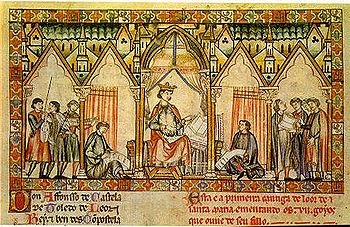 Although the Moorish settlers were largely allowed to remain in-situ, rebellion broke out when the King failed to respect the terms of the treaty agreed and in 1266 an uprising by the Moors resulted in harsh military action. Alfonso called for the help of his father-in-law, Jaime the Conqueror of Aragón, who quashed the rebellion and expelled those who had participated in it. This left territories empty, lands which were distributed among noble families and others involved in the Reconquista, bringing families from Castile, Aragón, Asturias and the Basque country to Murcia, where they took control of old Moorish agricultural estates. Documents exist from the time just after the Reconquista which indicate the presence of a Moorish farm near the Puerto de la Cadena, and the noble Corvera family is included among those occupying lands in Murcia.
Although the Moorish settlers were largely allowed to remain in-situ, rebellion broke out when the King failed to respect the terms of the treaty agreed and in 1266 an uprising by the Moors resulted in harsh military action. Alfonso called for the help of his father-in-law, Jaime the Conqueror of Aragón, who quashed the rebellion and expelled those who had participated in it. This left territories empty, lands which were distributed among noble families and others involved in the Reconquista, bringing families from Castile, Aragón, Asturias and the Basque country to Murcia, where they took control of old Moorish agricultural estates. Documents exist from the time just after the Reconquista which indicate the presence of a Moorish farm near the Puerto de la Cadena, and the noble Corvera family is included among those occupying lands in Murcia.
During the 13th, 14th and 15th centuries the monarchy attempted to repopulate the area with Christian settlers, but this was a difficult task.
In 1453 there is legal documentation related to the properties of Martín de Corvera, and in 1465 a land ownership document makes reference to the “Camino de Corvera, Rambla de Corvera and Balseta de Corvera”. In 1478 one of the landowners was Gonzalo Pagán, and in 1485 others are mentioned, including Juan de Huete and Pedro Vidal. The district was large, and was recognized as a “caserío” (an estate) in 1516.
However, repopulation was slow.
Murcia was frontier territory, close to the last remaining Moorish kingdom in Spain: Granada, and the area was far from safe.
Attacks and incursions were a regular occurrence, not only to the presence of the Moors to the west, but also to the Berber pirate raids from the north of Africa which assailed the coastline, but by 1492, the Moorish Kingdom in Granada had fallen, the danger from land attack diminished, and the population began to increase.
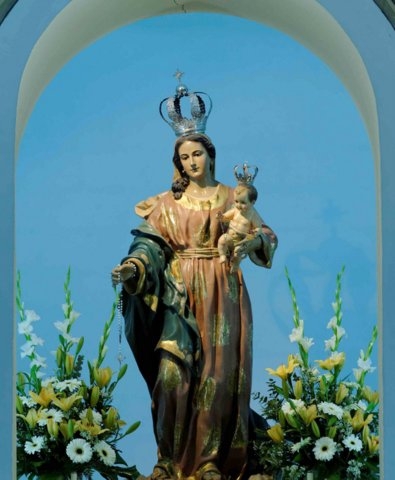 The parish church was inaugurated in 1636, and was consecrated in the name of the Virgen del Rosario, whose worship had been encouraged by Rome since the end of the previous century. The church became the place of worship for those living in all the surrounding area.
The parish church was inaugurated in 1636, and was consecrated in the name of the Virgen del Rosario, whose worship had been encouraged by Rome since the end of the previous century. The church became the place of worship for those living in all the surrounding area.
Corvera in the 18th century.
Like many other parts of the Campo de Murcia, Corvera came under the administration of the Concejo de Murcia, and in 1713 it was defined as a secular estate with its own local mayor. This placed it on a higher level than many other villages, who were not permitted their own local leader.
By 1772 the local administration of Corvera had gained in importance, and governed a number of the other villages in the area, including Los Martínez, Campuzano, Balsa de Aledo, Baños y Mendigo, Lo Jurado, Ventanas, Valladolises, Balsapintada, Lobosillo, Truyols and Doña Lucía. At around this time many of the old wells and water tanks in the main houses on the estates were renovated: this is the case, for example, in Casa Torrica.
Corvera: Modern era
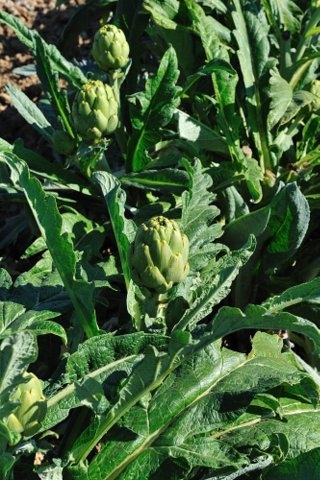 In 1820, when there began three years of Liberal government in Spain, Corvera was one of the many localities to gain independence from Murcia and set up its own Town Hall, which took over responsibility for the administration of the villages mentioned above and a few more. But this attempt at independence sputtered out in 1834, when it was again subsumed by the administration in Murcia. At this time the area had a population of about 800, most of whom worked on the farms where cereal crops were grown, oil was produced and cattle reared. They continued to live on rural estates scattered throughout the area, and there was also some hunting in the surrounding countryside and mountains.
In 1820, when there began three years of Liberal government in Spain, Corvera was one of the many localities to gain independence from Murcia and set up its own Town Hall, which took over responsibility for the administration of the villages mentioned above and a few more. But this attempt at independence sputtered out in 1834, when it was again subsumed by the administration in Murcia. At this time the area had a population of about 800, most of whom worked on the farms where cereal crops were grown, oil was produced and cattle reared. They continued to live on rural estates scattered throughout the area, and there was also some hunting in the surrounding countryside and mountains.
In the course of the 20th century the population of Corvera dwindled, and some of the villages which were formerly less important now grew, such as Lobosillo and Valladolises. These villages obtained their own independence as separate districts, and as a result Corvera became smaller. It now consists of just three villages: Los Brianes, Las Casicas and Los García.
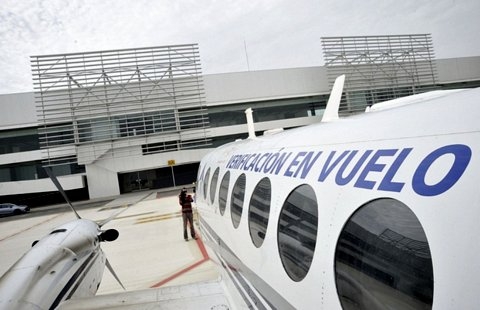 Although much of Corveras activities in the 21st century relate to agriculture, there are several industrial activities within the pedanía and a move towards residential tourism, with the construction of the Corvera Golf Resort.
Although much of Corveras activities in the 21st century relate to agriculture, there are several industrial activities within the pedanía and a move towards residential tourism, with the construction of the Corvera Golf Resort.
The pedanía is also the location for the new International airport of Corvera, which is due to open in the summer of 2013.
article_detail
Cartagena
El Carmoli
Islas Menores and Mar de Cristal
La Manga Club
La Manga del Mar Menor
La Puebla
La Torre Golf Resort
La Union
Los Alcazares
Los Belones
Los Nietos
Los Urrutias
Mar Menor Golf Resort
Pilar de la Horadada
Playa Honda / Playa Paraiso
Portman
Roldan and Lo Ferro
San Javier
San Pedro del Pinatar
Santa Rosalia Lake and Life resort
Terrazas de la Torre Golf Resort
Torre Pacheco
Aledo
Alhama de Murcia
Bolnuevo
Camposol
Condado de Alhama
Fuente Alamo
Hacienda del Alamo Golf Resort
Lorca
Mazarron
Puerto de Mazarron
Puerto Lumbreras
Sierra Espuna
Totana
Abaran
Alcantarilla
Archena
Blanca
Corvera
El Valle Golf Resort
Hacienda Riquelme Golf Resort
Lorqui
Molina de Segura
Mosa Trajectum
Murcia City
Peraleja Golf Resort
Ricote
Sucina
Condado de Alhama
El Valle Golf Resort
Hacienda del Alamo Golf Resort
Hacienda Riquelme Golf Resort
Islas Menores and Mar de Cristal
La Manga Club
La Torre Golf Resort
Mar Menor Golf Resort
Mazarron Country Club
Mosa Trajectum
Peraleja Golf Resort
Santa Rosalia Lake and Life resort
Terrazas de la Torre Golf Resort
La Zenia
Lomas de Cabo Roig

CAMPOSOL TODAY Whats OnCartagena SpainCoronavirusCorvera Airport MurciaMurcia Gota Fria 2019Murcia property news generic threadWeekly Bulletin



